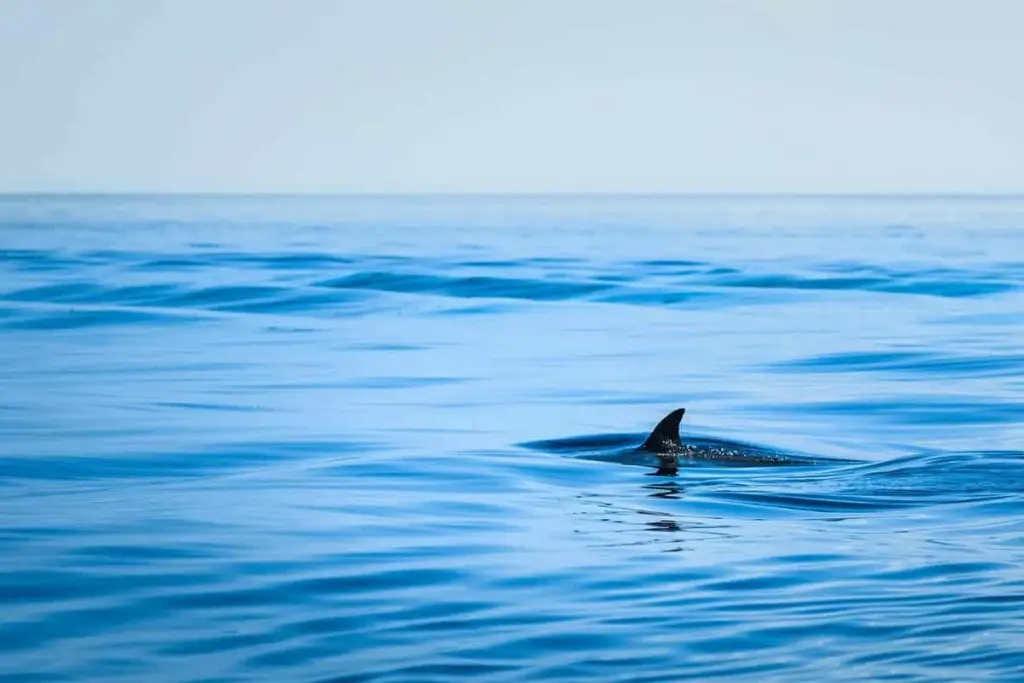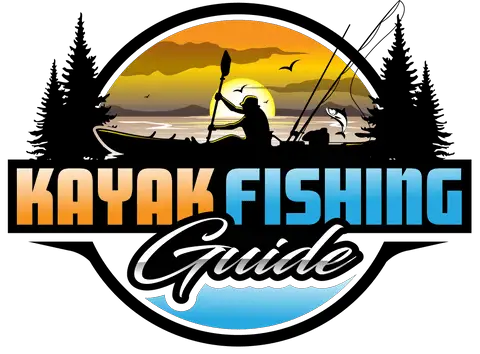
Kayak fishing is an excellent option for those who don’t want the hassle of maintaining a large boat or often fish alone. However, most people unfamiliar with kayak fishing assume that because you’re on a smaller vessel, it’s impossible to catch bigger fish or small sharks.
Fishing for small sharks on a kayak is possible with the right tools and technique for reeling them in. While fishing, use a light, braided line (no more than 50lb). Once you’ve got a shark or large fish on the hook, keep your rod facing the front of the kayak to prevent tipping as you reel it in.
Fighting sharks and big fish in a kayak is unlike any other form of fishing. The danger is elevated, and the rush is more intense, but the catch is more gratifying. Of course, the reward is not worth any of the risk if there’s a chance you could be swimming away from a shark instead of the other way around. So, in the remainder of this article, we’ll discuss some best practices for fishing for sharks on a kayak.
How to Fish for Small Sharks in a Kayak
The story about how you hooked baby Jaws could be one that you will tell your friends for the rest of your life. Sharks are the oceans’ most ferocious predators, and catching one—no matter how small—is no small feat.
To improve your chances of successfully catching a small shark in your kayak without incident, follow these fishing tips:
- After casting, keep your line’s drag loose while waiting for a bite. Sharks are intelligent hunters, and they know when there is something “fishy” about their food. If the drag is too tight, the sharks will not take the bait, so keep it loose, so the shark is more inclined to bite.
- Once the shark takes the bait, wait 10-15 seconds before creating tension on the line just to be sure the shark is on the hook. After that, hold on, cause you’re going for a ride.
- Once the shark has tired out and you begin to gain back line, tighten the drag to prevent the fish from shooting out.
- Loosen you drag when the shark begins to approach. Sharks have a lot of fight, even when you think they are tired.
- Try your best to wear out the shark as you are bringing it in. Don’t freak out when they start to take you on a ride. They are powerful swimmers and will likely drag you for a while.
- Sharks are natural-born killers, so even if they are out of gas, and on death’s door, they will still lash out with what they have left. You don’t want to have your hands anywhere close to the rows of razor-sharp teeth. A circle hook usually snags the fish at the corner of their lip, making it easy for you to keep away from the teeth and get your catch back.
Of course, knowing the correct techniques for shark kayak fishing is one thing; having the right tools is another. Make sure you have the following before attempting to fish for sharks on your boat:
- Small Anchor – Drop this anchor off the side of your kayak before casting the line. Once you hook the shark, ditch the anchor; fighting a shark with an anchor still attached to you will force the shark to exert too much energy and could potentially harm them. You want to wear your catch out, but not so much that it becomes deadly.
- Light Braided Line – As mentioned earlier, avoid using a braided line over 30-50lb if possible.
- Barbless Circle Hooks – These hooks are designed to snag the fish by the corner of their mouth, making it easier for you to remove the hook without having to go anywhere near a shark’s teeth.
Avoiding Potential Dangers
There are few scarier ideas than swimming in shark-infested waters, and that is precisely what you risk by paddling out into the area on a kayak. So, the best way to ensure your safety while fishing is to follow a few simple precautions:
- Avoid going out on the water alone if you have the room for another person. If you are a big game fishing, there are too many things that can go wrong. Have a buddy with you, especially if your kayak allows room for it, so that if a situation does occur, you have someone that can assist.
- Don’t go kayak fishing if the weather conditions aren’t right. Kayaks are great because they put you right on the ocean level and up close and personal with the fish. But, you have no speed, and you are as tiny as a dot to boaters. If a storm rolls in, there is no way that you are out-paddling Mother Nature. If the conditions are not perfect for kayak fishing, either use a boat or wait for another day. The sharks are not going anywhere.
- Make sure there is no slack in the line. There are two reasons why you might have slack after you hooked a shark: Either you lost the fish, or the shark is swimming towards you at 30-50 mph. Braided line will slice through or severely damage any equipment or appendages between the slack and the reel, so if you notice slack, try to follow the line to see where it’s headed and stay alert.
- If you catch a shark, don’t bring it into the kayak. The trophy picture of holding a shark above your head is not worth a possible trip to the emergency room. A shark’s skin is tough, their tails can cause severe lacerations, and they have a lot of teeth. It’s always better to be safe than sorry.
- Understand how to recognize a tired shark versus a tired shark you can approach. Sharks are smart, powerful swimmers and can take off in a flash as a last-ditch effort—possibly tipping you and the kayak over if you’re not prepared for it.
Tips for Staying Topside
Naturally, the biggest concern you may have about kayak fishing is how to stay afloat and topside in the event you end up getting to reel in a small shark. Kayaks, in general, are very stable, but like any other boat, they can capsize under the right conditions—from waves or simply losing your balance while on board.
Staying right-side-up while fishing for anything is essential on a kayak, but staying dry will save your life if your catch turns out to be a shark. To ensure you stay safely balanced and in your kayak while reeling in a shark, keep these things in mind:
- Try to maintain your focus and composure while you have a shark on the line. A lapse in judgment could result in a flipped kayak, injury, and losing the catch.
- If you approach a shark on either side of your kayak, and the shark has a scary amount of fight, it can easily take off and flip you and your kayak.
- Keeping a loose drag when reeling in a shark on the broadside of the kayak will prevent a rollover if it tries to run or buck, which they tend to do.
- The best way to avoid tipping while fighting with a shark is to keep the rod facing towards the bow. If the shark starts to swim to the right or left, keep your rod facing front, and the strength of the shark will swing your kayak around to keep you looking forward.
Conclusion
Fishing for sharks in a kayak is not only possible; it is an invigorating experience if you hook one and can reel it in. The danger of doing so is great, but safety, tools, and technique are the keys. If you want to improve your chances of safely reeling in a small shark, follow the above tips we’ve provided, and you’re sure to bring one home after your next trip.
Have fun and stay safe out there!
